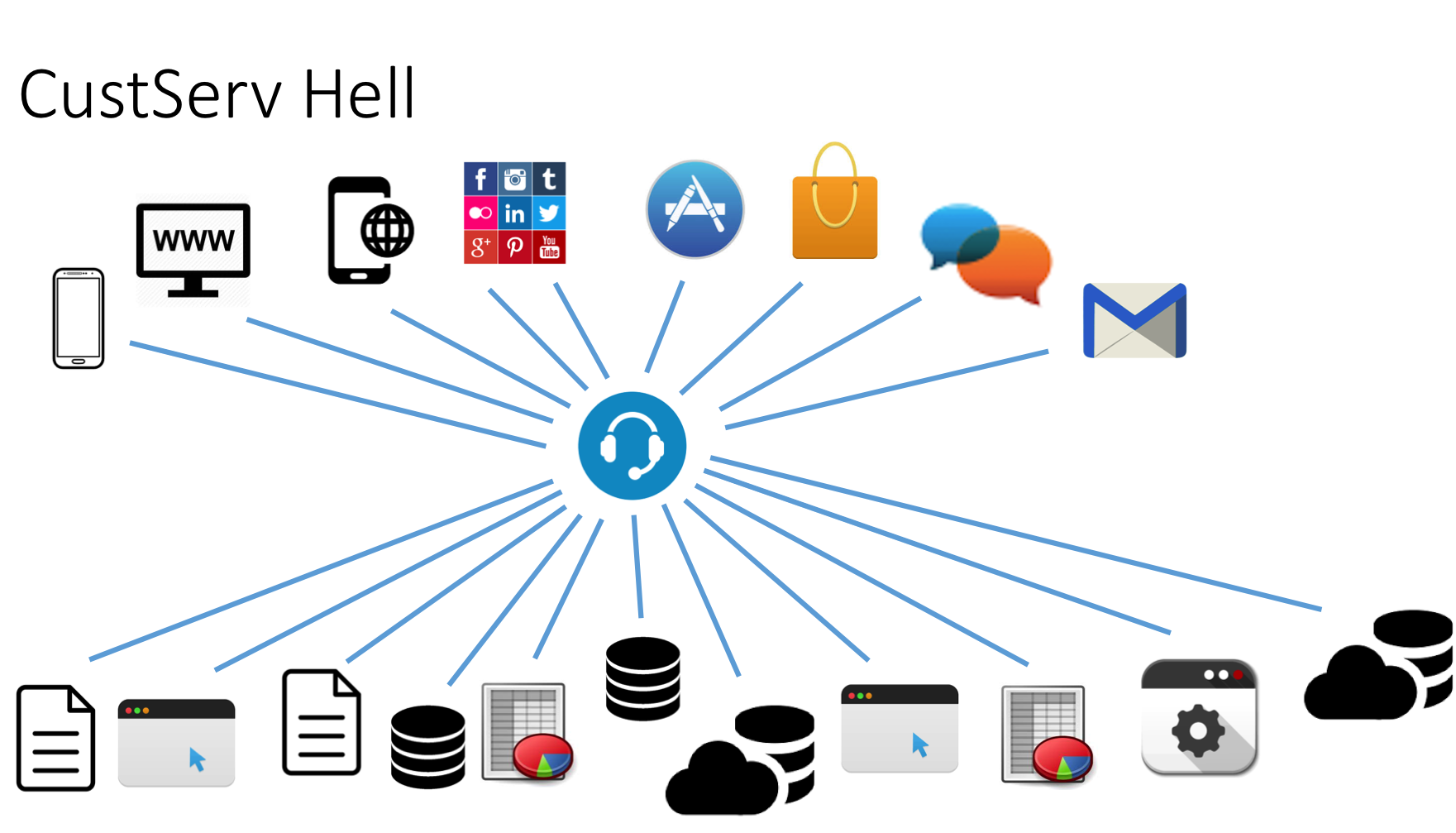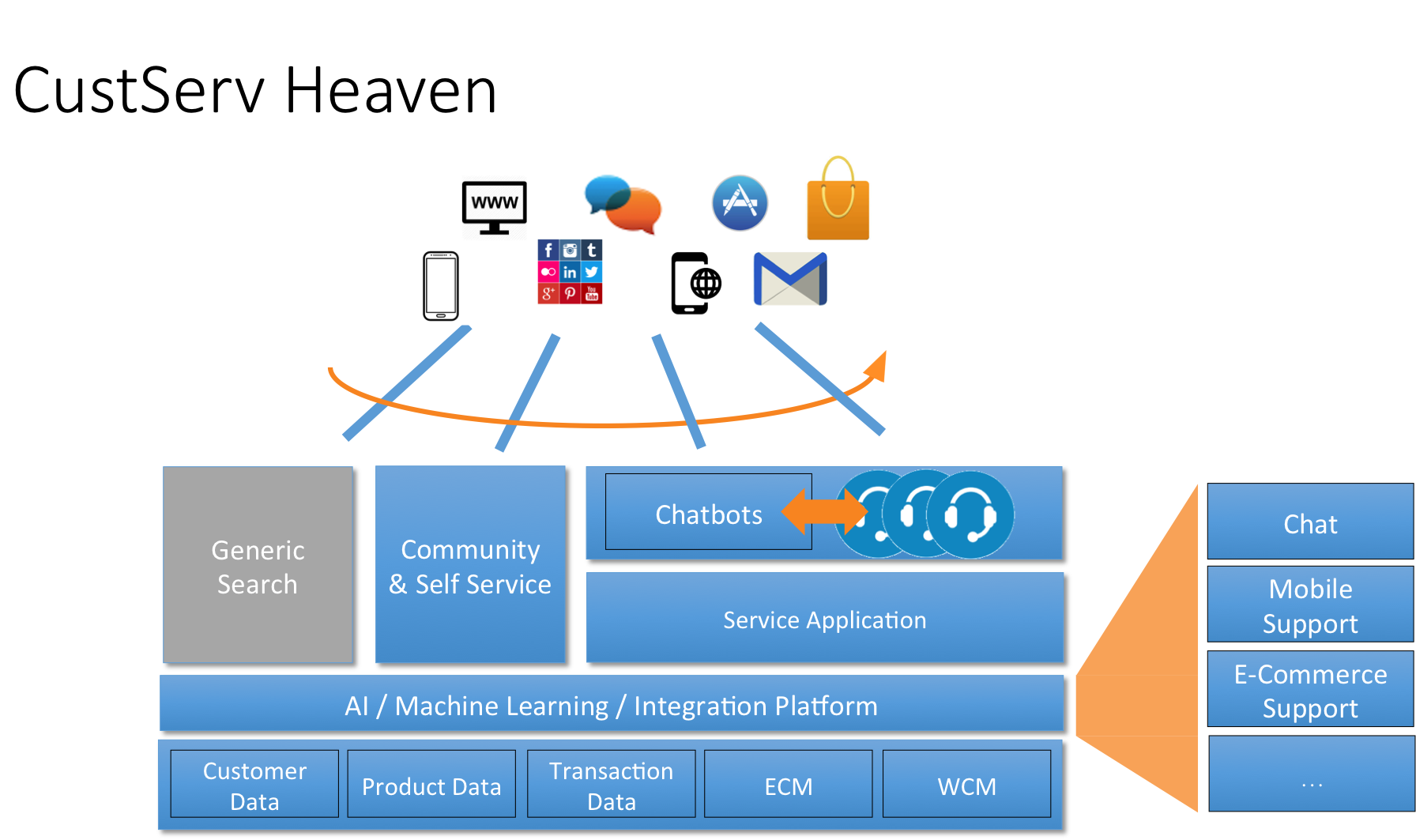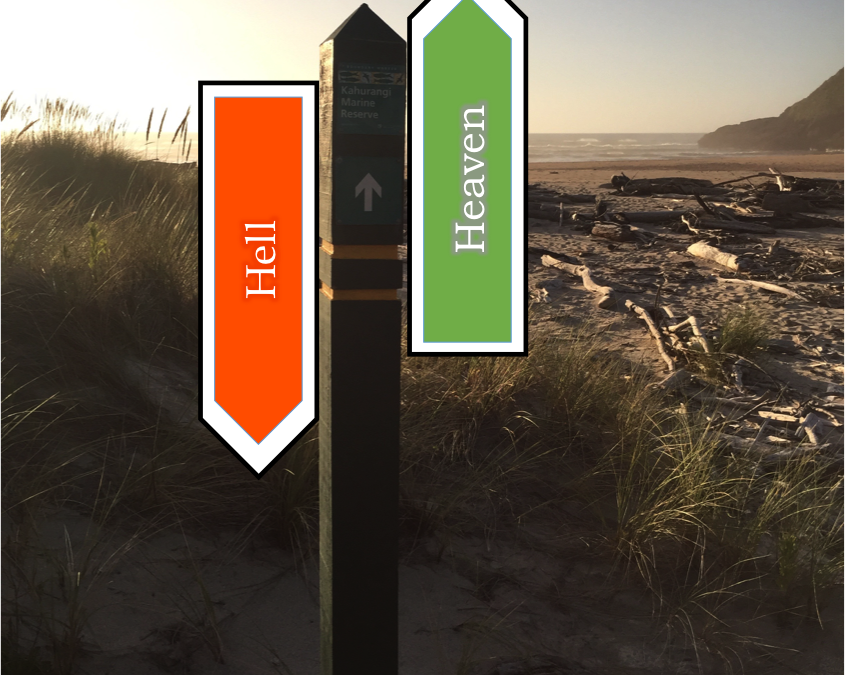Today, customers are communicating with businesses on a variety of channels. One customer calls in, inquiring about the status of an online order. Another sends an email. A third customer may ask for service in-store.
If a mobile app is not meeting the customer’s expectation, the customer may prefer self-help and check an FAQ in the app. An alternative is to initiate a chat with an agent, also inside of the app.
Or, if someone is really annoyed, that customer may even rant on a social channel such as Facebook, Twitter, or Instagram.Company reality is that there is more than one CRM, and several business systems. All come with with their own backend. One company might be using all of the following, without even realizing how fragmented the experience is:
- An e-commerce system that comes with its own service subsystem.
- An order fulfillment system that is not connected to the CRM.
- Mobile app support that has its own backend.
- Social Media that is often run by marketing and not customer support.
- E-mail support that is handled via a joint inbox, which is not integrated into any support system.
This is CustServ Hell!

In CustServ Hell, customers do not get recognized and often need to repeat the same information over and over, because there is no integrated process.
This is a customer experience nightmare.
CustServ Hell forces service agents to work with a great number of applications and/or tabs in their browsers. Their work is very cumbersome, inefficient and error prone. In order to be able to satisfy a customer request, agents need to tap into different applications, like CRM systems, knowledge bases, and even different ordering systems. Then, the reply is sent simply using an e-mail application.
The incident does not leave a trace in the CRM system, nor does a reply. Therefore, newly created knowledge is hard to access for other service agents.
Of course this has a negative impact on employee- and customer satisfaction. And it is a waste of valuable resources and money.
This is where the value of an integrated system, really shines.
CustServ Heaven …
…is a fully integrated customer service system that helps customers get resolutions easily via self service, while agents have all the necessary tools in one place. This combination helps them reach maximum efficiency.
In CustServ Heaven, the relevant data — customer data, other master data, transactional data, behavioural data, and knowledge bases/content—is integrated and available through an open platform that powers the main customer service application. Additional customer service applications, like chat, mobile in-app support, or e-commerce support applications are seamlessly integrated via APIs. Customers have the possibility to start with generic web searches and from there can easily move on to internal communities and assisted support. This makes up for an effective and efficient world and is a triple win.
Customers easily get their inquiries resolved, agents have a powerful toolset at hand and can work efficiently, and the company reaps the benefits of high productivity as well as satisfied customers and employees.

CustServ Heaven is also a dream.
But a dream to strive for.
And there are ways to gradually achieve this dream.
Getting closer to Heaven
Think big,act small, and choose the right components for your customer service infrastructure.
Many companies already do have a CRM system that offers customer service functionality, be it a tier one system like SAP, Microsoft Dynamics, Salesforce, or one of the many other available good systems. Many companies also have a knowledge base supporting customer service. Keeping the CRM system and the knowledge base integrated is step one. This enables efficient knowledge creation and sharing. But there are a few additional steps that must be followed through for an effective CRM integration.
- E-mails that come into the support channel need to be routed through the CRM system. That way they can be easily routed to the right agents and the customer service team can efficiently handle them. Cases should be created automatically
- Combine channels like mobile in-app support and e-commerce support systems so that the current knowledge base is locally accessible. When cases are automatically created for the customer (with relevant data attached) customers can follow their preferred patterns without leaving the app. Also, agents stay in the work environment that they are used to.
Even if the phone system is not integrated to the CRM system, this is a very strong foundation that covers the most prevalent channels. Every additional channel that the company supports, like chat, can get added to this infrastructure.
You may not be there yet – but you have taken important steps towards achieving the goal. And your agents will feel better, too.

